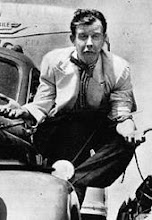Three weeks in and they've got us pepping along at Roberto-Venn. The first section of the course focuses on the design and construction of electric and acoustic guitars. We are building one of each simultaneously. There's a ton of great information to soak up! At this point we've drawn full size plans for both the electric and the acoustic. I whipped up a design for my electric based on the solid body guitar Paul (P.A.) Bigsby built for Merle Travis in 1948 (more on this fascinating and historically important instrument in a future Twang). I'm not trying to reinvent the wheel with my design, just to learn some fundamentals while at the same time experimenting with some ideas that I've always thought would make a great guitar. In terms of the acoustic, Martin pretty much set the industry standard with their guitars so that's what we're focusing on at school. As mentioned in a previous entry, the acoustic will essentially be a Martin - OM (the other choice being the larger bodied Dreadnought model). Some shots:
Project Telecaster body roughed out on day 2:

First strip of the OM two ring rosette:

Roughed out rosewood back for the acoustic: joined, back strip glued in, brace pattern drawn:

Below is a full size drawing plan for the electric's headstock. I modified the curve on the upper knob slightly from the Bigsby/Travis guitar. Guitar geeks note: while the 6 inline tuner layout and headstock shape are most commonly associated with Fender instruments, Bigsby's design actually predates Leo Fender's. Fender began selling his first guitar, the Broadcaster, in 1950 while the familiar 'Stratocaster' headstock did not appear until the model itself was introduced in 1954. As the story goes, Travis requested that Bigbsy build his guitar with 6 inline tuners so as to allow for easier tuning and string changing. Many people consider the Bigsby/Travis instrument to be the first true modern solid body electric guitar.

The body outline:

My work bench at the end of week 3:














No comments:
Post a Comment